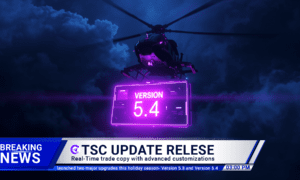A 2024 Google Cloud benchmark shows that a pre-warmed Cloud Run service equipped with an NVIDIA L4 GPU can become ready in about five seconds, then scale to thousands of containers in a single region. Jay Krishnan recently used the same capability for a Fortune 500 client, steering just over ten thousand concurrent training tasks without maintaining a permanent GPU cluster.
“Serverless used to be glue,” Jay Krishnan says. “Now it is a control plane that can burst-allocate GPUs faster than any fixed cluster we have ever owned.”
Jay Krishnan’s Track Record in Large-Scale AI Infrastructure
In this space, Jay Krishnan is widely regarded as an authority on secure, large-scale AI platforms. Over the past decade, he has led cloud engineering teams that automated disaster-recovery drills across multiple regions with zero downtime, designed regulator-approved confidential-computing stacks for financial services, and authored reference blueprints on burst GPU training that are cited by industry groups focused on sustainable compute. He is a regular speaker at regional cloud summits, where his talks center on elastic AI and governance.
His recent collaboration with senior leadership at NAIB IT Consultancy W.L.L, where the General Manager – AI & Cybersecurity oversees emerging AI infrastructure and cybersecurity practices across Dubai and Bahrain, reflects the growing importance of scalable, stateless architectures in enterprise innovation.
Why Burst Training Needs a Stateless Control Plane
Traditional trainers reserve GPUs for hours even when most time is lost to I/O or gradient exchange. Jay Krishnan argues that workloads such as prompt tuning, vector embedding, and contrastive learning gain little from that model.
“Each sample is independent,” he explains. “Compute should appear for ninety seconds, finish its tensor math, then disappear.”
The team therefore designed an orchestration layer where Cloud Run or Lambda issues shards, tracks metadata, and releases capacity the moment a task completes.
Architectural Blueprint
Dispatch layer:
Cloud Run services or Lambda functions read job manifests from Pub/Sub or SQS, slice them into micro-batches, and push task IDs into Redis.
Worker layer:
GPU containers run on GKE, AWS Batch, or a small Slurm pool. A worker pulls a task, downloads the mini-dataset from Cloud Storage or S3, performs the forward or backward pass, and writes the result to object storage.
Aggregation layer:
A lightweight Cloud Function collects partial outputs, applies a reduce step if required, and stores the updated model artefact.
Mutual TLS protects every hop. A run hash in each call binds logs, code digest, data URI, and GPU type for later audit.
Cold-Start Economics
Pre-warmed Cloud Run revisions keep GPUs in parking mode and deliver first-byte latency near thirteen seconds. Lambda handles orchestration only, so its response stays in the millisecond range. GPU nodes are spot instances that join or leave the pool every few minutes according to queue depth. Jay Krishnan reports a 38% cost reduction compared with a dedicated cluster that idles between peaks.
Failure Modes and Their Fixes
Three issues surfaced during the pilot:
- Task duplication appeared when Redis visibility timeouts expired before kernel completion; longer timeouts and idempotent writes removed the problem.
- Burst throttling on Lambda triggered at roughly thirty-five thousand invocations a minute; using two extra regions and adding jitter smoothed throughput.
- Version drift occurred when container tags diverged from dataset hashes; digest pinning and SHA-based data URLs eliminated mismatches.
“Five-digit concurrency forces discipline,” Jay Krishnan notes. “Retry logic, idempotency, and strict versioning are no longer optional.”
Governance at Scale
Every task writes a JSON envelope that records container digest, data URI, GPU SKU, runtime, and exit status. A nightly batch reconciles envelopes with object-store manifests; discrepancies open a PagerDuty ticket. Security blocks any image older than ninety days through an admission policy.
Leadership Perspective
Jay Krishnan distills his lessons into three key takeaways for senior engineering leaders:
- Serverless functions can coordinate GPU bursts at enterprise scale while keeping control-plane latency low.
- Cold-start penalties are manageable; warm pools and snapshotting keep latency acceptable for batch workloads.
- Governance remains intact through automated metadata capture, region caps, and image-age policies.
As one executive from NAIB IT Consultancy W.L.L remarked, “this model aligns perfectly with our vision of agile and cost-efficient AI deployment across borders.”
“We treat GPUs as a transient utility,” Jay Krishnan concludes. “When training ends, the fleet dissolves. Finance gets a lower bill, security trusts the isolation model, and scientists iterate without waiting.”
For CTOs dealing with spiky training demand and idle cluster cost, the evidence shows that serverless GPU orchestration has moved from prototype to production reality.

































